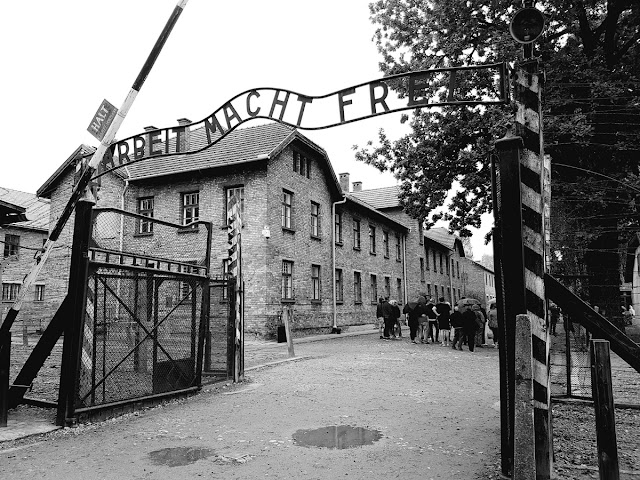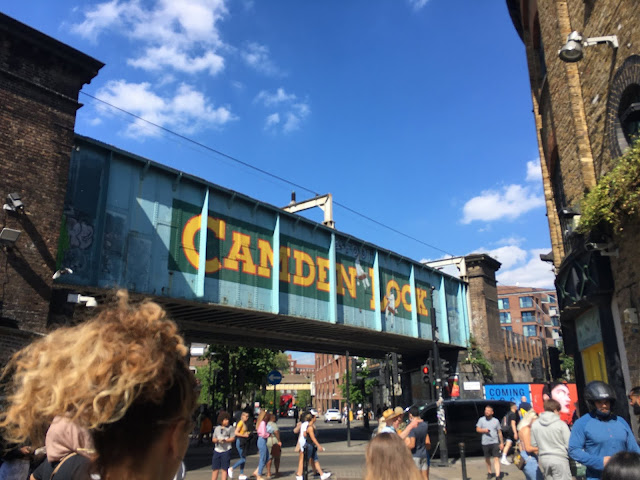A Visit to Auschwitz and Birkenau
I went to Auschwitz-Birkenau in mid July 2019 with my friend Molly. It was about halfway through our 3 week inter-railing trip at the end of our gap year. Whilst we were planning our trip we had discussed a number of times about whether we wanted to visit Auschwitz at all. We had both questioned the appropriacy of a death camp being turned into such a huge tourist attraction. In fact Poland's most well known and most visited site is Auschwitz which I think is such a shame because Poland has so much more to offer.
I think out of the two of us I had been the most resistant to the idea of visiting it. We had both taken A Level history which covered the Nazi rise to and fall from power and therefore included the Holocaust. I felt I already had an understanding of the atrocity and the effect it had and in many ways I viewed Auschwitz as more of a tourist trap. I'm sure that many of you have read that and though "What a cynical and heartless thing to say!" and I guess in some respects you may be right.
Having already landed upon these opinions I was resistant to visit the concentration camp. However Molly twisted my arm and I reluctantly agreed. Around Krakow there were lots of little booths advertising cheap trips with a guide and transport to Auschwitz but we weren't sure whether they were legit so instead we booked our guide with transport at the tourist information centre just off the main square. It was simple and easy to do. We picked a time we'd like picking up which would get us to Auschwitz for about 10am, confirmed some details and paid. Overall it was about £26 I think for a little mini van to Auschwitz, a 2 hour guided tour, then a drive to Birkenau and an hour's tour before being driven back to Krakow. I thought it was quite a comprehensive service and we felt confident in the company. You don't have to visit Auschwitz with a 'package deal'. You can get there on public transport and pay on the door. It's just much easier if you book a package in advance because it's such a popular attraction. Two days later we waited at the agreed meeting point in the pouring rain for what felt like hours before a minivan skidded up and the driver asked if we were waiting for a tour. We said yes, hopped in with the others and were whisked off. The drive was about 45 minutes long and the driver drove like a maniac but we got to Auschwitz in one piece.
We were told the itinerary for the day which included a quick lunch and whilst there was a cafe we had made our own sandwiches etc just for ease and speed. We queued up and were introduced to our tour guide before being given earphones and let into the compound. Our tour guide was really very good and knew a great deal about the Holocaust and the history of Auschwitz including what the town of Oświęcim pre-Nazi occupation which was refreshing. We were taken through the main compound and into some of the cell blocks. Some of them included the famous displays of hair cut from gassed victims and piles of spectacles, shoes and even pots and pans. In many ways it was quite difficult to see everything properly because there was such a high volume of people passing through that our tour guide whisked us away and began talking about something new. Even though me and Molly both tried to linger a few times, we found that our earphones began to crackle as we came out of range of the tour guide so we ended up missing information on another section. Despite this there were lots of information boards and personal stories up on the wall as well as recreations of rooms so that you certainly had an authentic feel of the place.
Throughout the tour, our guide continuously mentioned the number of people that had died in the Holocaust and mentioned as well the number of Poles who had died. Did you know that Auschwitz was initially a concentration camp for Polish people and that Birkenau was intended primarily for Soviet PoW? I thought it was really important and refreshing that we were told about this because I often think that the Holocaust is centred around the 6 million deaths of Europe's Jews which whilst abhorrent is not the full picture. I think that sometimes other elements re left in the dark and forgotten about because the volume of Jewish people killed is so big and is certainly the dominant narrative.
After the tour which was lengthy and informative we had a quick lunch break which was really welcome before we went over to Birkenau, about a 20 minute journey. Here, because almost all of the camp was dismantled after the war, the tour was more focused on remembrance and reflection and we were asked to walk around in silence. However there was a visit to the gas chambers and one of the prison bunk cells which had been graffitied with peoples names which I thought was so disrespectful. Something I was surprised at was a large group of Israeli military personnel who appeared to be visiting the site. Peculiarly I found the presence of soldiers quite uncomfortable, possibly because of the history of the place. Later, me and Molly googled why they might be there and found that Israel regularly sends dispatches off to Auschwitz- Birkenau to learn about the Holocaust and bolster the sense of national pride and duty and the importance of protecting the motherland. A rather aggressive and nationalistic message if you ask me although the Israeli-Palestine conflict is a while other matter.
Throughout the tour, our guide was at pains to convey to us the level of violence and volume of deaths across all the ethnic, religious and other groups. But he was also at pains to convey the inaccuracies and sentimentalisation of the portrayal of the Holocaust in film which was something the rest of the tour group seemed a little confused with to say the least. I though he was right to make this point. Whilst I don't have a problem with people watching 'Schindler's List' or reading 'The Tattooist of Auschwitz'; they're based on real events but they are not 100% accurate and as long as they're consumed with that in mind I think it's fine. The problem is when people begin to gather all their information from these partially fictionalised accounts and treat them as gospel.
Right at the start of the tour you are told that photography is perfectly acceptable but you are asked not to take selfies as that would be disrespectful. Despite this, there were numerous people- often couples, taking selfies in front of the "Arbeit Macht Frei" entrance sign and replicas of the trains used to transport prisoners in. I thought this was hugely insensitive and unnecessary. I didn't take any photos at all. After about an hour we made our way back to the minivan and were driven back to Krakow's Main Square.
As to whether my opinions on Auschwitz-Birkenau as a museum have changed, I'm not sure. Some people have an epiphany after visiting and are changed people. I didn't feel that. I didn't feel particularly emotional, at least not more so than when learning about it in A Level history lessons. Perhaps I was seemingly so detached because I already knew so much of the information. I still think that the museum makes an awful lot of money and the inclusion of a cafe and extensive bookshop did seem very commercialised- especially looking at the prices! But am I totally against it? I'm still undecided. I think it will be an ongoing debate for me. Do I recommend it? I suppose it depends on how you treat your visit; is it educational or something to tick off the bucket list and put on Instagram? I think for me, my visit to Krakow would have been complete without my trip to Auschwitz, I wouldn't go again but I wouldn't discourage others from going, at least not until I've made up my mind either way on its ethics.
Disclaimer: The image used in this blog is not mine; I have not taken and do not own this image. All rights and credits go to the respective owner.



Comments
Post a Comment